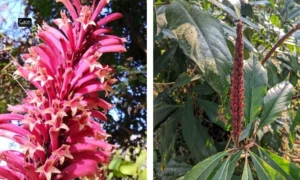As the nationwide Diwali festivities have concluded, Bihar and Jharkhand states are all set to celebrate their largest four-day festival — Chhath, meaning six in Hindi. This festival is commemorated every year six days after Deepavali.
Today, November 8, is the first day of Chhath Puja 2021. It will conclude four days later on November 12.
The four-day festival is celebrated to worship Sun and his sister Chhathi Maiya and Goddess Usha from the Vedic period who is believed to be the consort of Sun. The festival is widely celebrated in Bihar, Jharkhand, border areas in Uttar Pradesh and in Nepal as well.
The festival involves several rituals, which are considered severe compared to other Hindu festivals. As part of the festival, devotees gather and take a holy dip in rivers, ponds, and water bodies braving the cold. They also observe strict fasting during the four day festivities.
The customs and practices established by my naniji (maternal grandmother) is what my mother follows, and now, I am trying to do the same. Though I must admit, naniji was far more rigorous in observing Chhath. She remains to be my reference for a strong woman, closely followed by my mother.
Chhath Puja Day 1: Nahay Khay
Today, November 8, is the first day of Chhath Puja. On this day, devotees wake up early in the morning, worship the Sun and cook a proper meal for themselves.
The lunch on the first day of Chhath is known as Nahay Khay, which means ‘Bath and Eat’. This is the second last meal before tomorrow’s fast – Rice, bottle gourd in gram lentil (chana dal mein lauki), dry potato with dill (aalu aur soa bhujiya), fenugreek pakoda (methi ka pakoda), spinach (palak ka saag), potato and fresh peas (aalu matar ki sabzi), coriander chutney (dhaniya ki chatanee), fried bottle gourd in gram flour paste (lauki ka bachhka), fried green chilly mixed with fresh lemon juice.
Chhath Puja Day 2: Kharna
The second day of Chhath is known as Kharna. We wake up at around 3-4 in the morning. We drink sharbat (juice) and then observe fasting for an entire day. We eat nothing, neither food nor a drop of water.
At sunset on day two of Chhath Puja, we break the fast with kheer poodi. The kheer, a traditional Indian sweet dish, is made using rice boiled with jaggery and milk. We also serve this to guests who come home.
Thereafter, we go without food and water from the evening of the second day after eating kheer – poodi till the fourth day of the festival. We drink water after the morning offerings on the fourth day, and thereafter have food.
Chhath Puja Day 3: Sandhya Arghya
The third day of Chhath Puja is known as Sandhya Arghya. There is a tradition of offering Arghya to the setting Sun in a river or pond on this day. Devotees observe a Nirjala (without water) fast for the whole day.
We have a small pond at our home in Dhanbad, Jharkhand, which is used only during the Chhath Puja. The pond is cleaned, filled with water and decorated with flowers and rose petals.
On the third day, thekua — a traditional Bihari dessert — is also cooked. Thekua is a cookie made with whole wheat flour.
Chhath Puja Day 4: Usha Arghya
The fourth day of Chhath Puja is known as Usha Arghya or morning offerings. On this day, all the devotees go to the riverbank or nearby water bodies before sunrise to make offerings to the rising sun. After offering Arghya, people sit on the ghat and offer their prayers, then prasad is given to the people around.
The festivities conclude with a havan.
Environmentalists have claimed that the festival of Chhath is one of the most eco-friendly religious festivals that should be used to spread ‘the message of nature conservation’. Besides, it’s arguably one of the few Hindu festivals that transcend the rigid caste system, which emerged in the post-Vedic period, to touch upon the ideas of equality, fraternity, unity, and integrity. Every devotee — elite or middle class — prepares almost similar prasad and other items to offer to the Almighty. All the devotees without any distinction in caste, colour or economy, arrive at the bank of rivers or ponds to offer prayers.
Happy Chhath! Jai Chhathi Maiya!

















